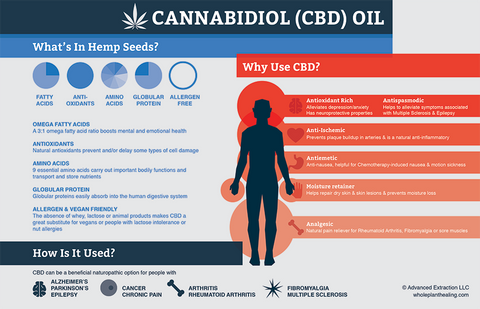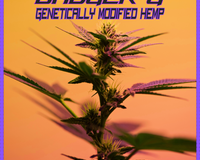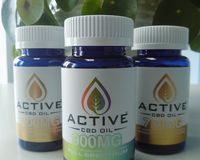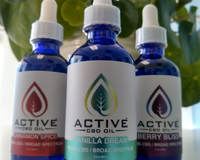CBD oil use is increasing among all populations and countries, and research suggests it to be helpful for seizures, anxiety, and other ailments. However, pain management, of both chronic and acute pain, is one of the greatest treatment costs associated with these conditions. As the elderly population of the United States grows to ever greater proportions, the number of people with chronic pain symptoms is increasing to an all-time high. According to statistics published by the U.S. Department of Commerce Economics and Statistics Administration U.S. CENSUS BUREAU, between 2012 and 2050, the United States will experience considerable growth in its older population. In 2050, the population aged 65 and over is projected to be 83.7 million, almost double its estimated population of 43.1 million in 2012.

With the increase in the age of our population, we are now seeing millions suffering from chronic pain symptoms. These symptoms may be the aftermath of a debilitating illness such as arthritis or cancer, but all patients require special care and medications.

Low back pain is among the most common complaints, along with migraine or severe headache, and joint pain, aching or stiffness.
Some of the other pain statistics include:
- One-fifth of adults 65 years and older said they had experienced pain in the past month that persisted for more than 24 hours.
- Almost three-fifths of adults 65 and older with pain said it had lasted for 1 year or more.
- More than one-quarter of adults interviewed said they had experienced low back pain in the past 3 months.
- Fifteen percent of adults experienced migraine or severe headache in the past 3 months. Adults ages 18-44 were almost three times as likely as adults 65 and older to report migraines or severe headaches.
- Reports of severe joint pain increased with age, and women reported severely painful joints more often than men (10 percent versus 7 percent).
- Between the periods of 1988-1994 and 1999-2002, the percentage of adults who took a narcotic drug to alleviate pain in the past month rose from 3.2 percent to 4.2 percent.
The most common drugs used to alleviate chronic pain are opioids such as OxyContin, Percocet, fentanyl patches, or morphine. These opioids are often taken in conjunction with other drugs, such as anti-depressants or NSAIDS like ibuprofen. Not only are opiates addictive, but they can also leave the consumer with chronic intestinal issues such as constipation, nausea, and ulcers. Where these drugs may be helpful for some patients, others are turning to cannabinoids to discover they might be particularly effective against chronic neuropathic pain, but less effective against acute pain.
Cannabinoids, whether taken orally, smoked, or vaporized, have been shown in preliminary trials to be effective in modulating the response to pain. An article published in November of 2011 showed the effectiveness, using human subjects, of augmenting opioid treatment for chronic pain with cannabinoids. “Pain was significantly decreased (average 27%, 95% confidence interval (CI) 9, 46) after the addition of vaporized cannabis. We therefore concluded that vaporized cannabis augments the analgesic effects of opioids without significantly altering plasma opioid levels.” Abrams, D. I., Couey, P., Shade, S. B., Kelly, M. E. and Benowitz, N. L. (2011), Cannabinoid–Opioid Interaction in Chronic Pain. Clinical Pharmacology & Therapeutics, 90: 844–851. doi: 10.1038/clpt.2011.188
How does The Endocannabinoid System work?
The EC system, which was named after the marijuana plant Cannabis sativa and its active ingredient delta-9-tetrahydrocannabinol, or THC, is unique in that it communicates directly with receptors in the brain and body and can alter the way a person perceives pain. The human body produces natural chemicals called cannabinoids which interact with receptors within the body to regulate body functions. Given that we already have cannabinoids in our body and receptors for them, this is likely why people claim to have such good results when using CBD.

While this is a very limited portrayal of the method by which CBD, THC, and other cannabinoids act upon the neurotransmitters within the human body, it serves to show we now know where the action occurs. Current studies are still identifying specific ligands and receptors on various cells within the human body upon which they work. They are finding that these cannabinoids are antispastic, anti-inflammatory, neuroprotective, and effective against certain psychiatric diseases.
How should cannabidiol or CBD oil be dosed?
Although there are no good studies that give clear dosing recommendations due to the lack of sustained human clinical trials, use should be based on the amount of CBD and route of administration best for the individual.
Taking into the considerations of the Davis drug guide, we have compiled some starting routes and dosages that may work for some consumers. However, this should be altered to fit the situation and the individual while remembering that all doses should be started at lower levels and increased as needed.
CBD Tinctures and Oils
Most people will start with one dropper of tincture under their tongue once or twice a day, typically once in the morning and once in the afternoon or evening for those who start at 2 doses. A typical starting dose will often be something like a total of 10-25mg of CBD. Wait at least 15 min between doses. Spread out doses used over the entire day. If unacceptable effects occur, temporarily discontinue, and either take a lower dose, or increase interval time between doses. Titrate to optimal maintenance dose (usual range 4–8 doses/day, usually not more than 12 doses/day; higher doses have been used/tolerated). Adjust dose to changes in individual condition.
Implementation
- Another possible schedule advises to administer one dropper 2 times a day, in morning and in evening, on first day. Administer under tongue or in buccal area. Rotate sites in mouth to avoid irritation. After first day, increase dose by 1 every 24 hours, spacing doses evenly. No more than 12 doses should be used over a 24 hour period. Space each dose by at least 15 min.
- If using a spray tincture, prime pump before first use. Shake bottle gently and remove protective cap. Hold bottle in an upright position and press firmly and quickly on the actuator 2 or 3 times, until the fluid emits steadily. Do not spray the back of the throat or into nose. Point spray into a tissue. Droppers do not need priming.
CBD Edibles and Capsules
CBD infused edibles and dosed capsules take longer to take effect and, again, should be taken at lower doses and increased as needed. The trick here is in the timing. Since it can take 1-3 hours to take effect, individuals should consider overlapping with a tincture or vapor. The vaporized version will be more immediate in effect, but shorter lasting and lower in strength.
CBD Topicals
These are commonly used for peripheral aches and pains in the joints or for skin afflictions such as psoriasis or shingles. Very little will enter the circulatory system, thus reducing the central effect, but patients report the effect to be relatively quick for skin disorders, and even a little faster for muscle aches and pains. The salves and balms are typically stronger than lotions or creams, and all topicals should be rubbed in thoroughly. Research suggests that the use of heat after application will likely increase the effectiveness, as it increases local circulation.
Vaporizing CBD
Vaporizing CBD is quickly becoming a popular way to use cannabidiol. Vaporization has a fast onset time that is almost immediate and therefore easy to dose. If it is not providing the desired effect, then vaporize more until the desired effect is reached. While vaporizing has an almost immediate onset time, the overall strength will not be as strong as the oils, tinctures, or capsules, and for that reason, is typically used as a CBD supplement in between other CBD products.
In summary, cannabidiol and CBD extracts are becoming a popular, natural choice for the increased population of people trying to manage their pain. Cannabidiol might be able to help you, too.
Discover CBD is here to provide you with blog postings and resources that contain only useful facts about hemp-based, legal Cannabidiol (CBD) leading you to the products that are right for you.
Do you have a question or comment about CBD? Let us know, and we will respond right away. In the meantime, sign up for our newsletters and visit our website regularly for the latest updates on research, legislation, and other news impacting you and cannabidiol.





























3 comments
CBD mart
CBD oil is now legal in many states. CBD oil for saleThe Missouri House has passed the legislation , a patient can use CBD only if all the gestures are failed and he has tried all the treatments.
John
I am a kidney transplant- 10 years out. Age 69. I have severe arthritis in bilateral knees and also intense foot pain partially from avascular necrosis and what my physicians believe is nerve pain. I am also well controlled diabetic, but my ENDO doc sez my foot pain is not diabetic in nature. I also have RLS which is extremely intense. I take Reqip for that and it certainly does help me out, but if I sit extended period of time my legs go absolutely crazy on me. I also tried magnesium for nerve pain, but that along with all the meds I take, cause too much nausea and makes it difficult to get anything accomplished. I now use topical magnesium, but I cannot tell if it is really helping. I would love some relief of knee and foot pain if at all possible. I will be seeing my transplant nephrologist in August and I want to bring this up to him again, but I am sure he will want to see proof that this would be safe. I think since thc is not in this, then maybe he would consider letting me try it. I don’t have many options on pain medication due to the kidney transplant.
Thank you. John
Barbara Villegas
I recently started vaping for Lumbar pain. I have Failed back surgery syndrome from a lumbar laminectomy with pedicle screws and a fusion in 2000. The results were a complete failure. In 2009 I had a neurostimulator implanted but the doctor has never been able to achieve better than 20% pain relief for me. I have been on so many different types of pain meds that the results have been poor. I started vaping a few days ago to see if it would work for me. It has helped tremendously. I have lived in constant pain since a car accident in 1989. I was the front passenger in a double rear-end collision (she hit us twice because didn’t let off the gas). Part of the pain I’ve been suffering with is the feeling of a skewer being stabbed in my lumbar region. I have received instant relief from vaping, which was truly unexpected. I now have hope that I can finally have some pain relief. I dont care for the high of marijuana, so I just use the CBD oil in a vapor pen. Its extremely easy to use and very portable. I can travel with it by simply storing it in my eyeglass case in my purse. I am so grateful that something has finally given me pain relief. I decide how much I need and I don’t have to wait for a doctor to prescribe it.